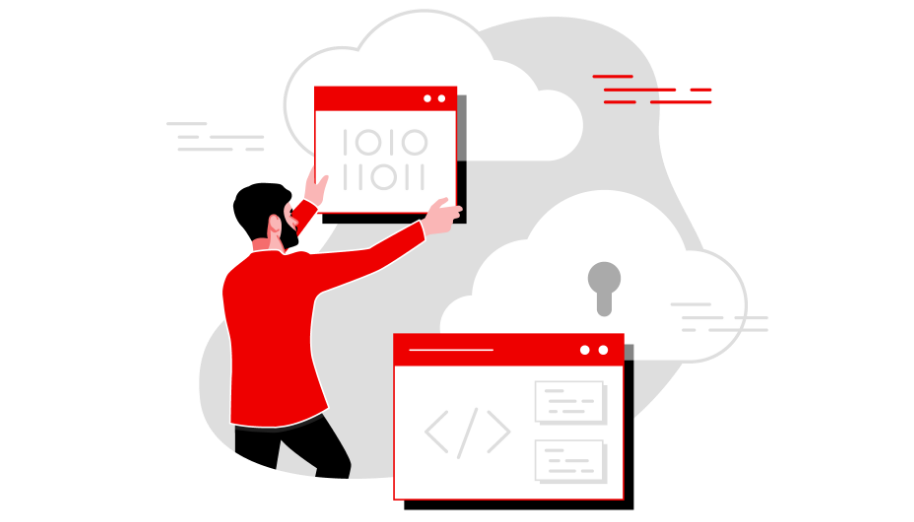Modernize your .NET workloads
Migrating .NET workloads to Red Hat Enterprise Linux and OpenShift
Overview
When modernizing .NET workloads, there are 3 typical modernization strategies: re-hosting to a cloud ready infrastructure, optimizing for cloud, or going cloud native.
This page aims to give you inspiration for your particular workloads—to understand the achievable benefits, the strategies, and to kick off your own initiative.
Which migration strategy you choose is specific to each business, your applications, and priorities—multiple strategies may be applicable simultaneously based on your needs.
Why modernize .NET workloads with Red Hat and Microsoft?
Business
| Challenge | Modernization benefit |
|---|---|
| Limited business agility slowing innovation
Maintaining legacy .NET workloads on legacy infrastructure are holding back business agility and innovation. |
Improved business agility and innovation
Consolidating workloads on OpenShift results in simplified, consistent business processes. |
| Discrete ecosystems as a barrier to cloud adoption
Linux and .NET workloads historically required separate processes, hardware environments, and administrator and developer skills. |
Cloud adoption fit-to-need
Workload consolidation facilitates streamlined operational processes. Rehosted, replatformed, and refactored .NET applications can run side-by-side in Red Hat OpenShift. |
| Managing operational costs
Costly to manage a scalable, reliable, secure, and low-cost dedicated windows environment alongside many workloads types on OpenShift that inherently offers those characteristics |
Reduced cost, budget flexibility
Simplified business processes, workload consolidation on the same/similar hardware frees up budget to execute on business-differentiating goals. |
IT operations
| Challenge | Modernization benefit |
|---|---|
| Data center complexity
Must manage multiple application types written to multiple programming languages, some of which have their own management capabilities and tooling. |
Better scalability, reliability, security
.NET Workloads can scale on demand on OpenShift. |
| Limited resources
Dividing hardware to support Windows and Linux/Kubernetes. |
Consolidated workloads
Manage compute resources holistically rather than as discrete servers. |
| Maintaining multiple ecosystems
Administering separate .NET and Linux environments can require separate administrators with appropriate dedicated skills. |
Consolidated workloads on OpenShift
Leverage common management expertise across many types of workloads, including .NET. Red Hat and Microsoft support. |
Modernization strategies for .NET
Lift-and-shift
Re-hosting your existing workloads to Red Hat OpenShift Virtualization will bring your existing Virtual Machine "as-is" directly into a modern, hybrid cloud and multi-cloud ready infrastructure.
Advantages:
- It's low effort, the workload looks almost the same, and you may use regular Virtual Machines (VMs) "as-is."
Considerations:
- This approach offers only a smaller cloud value, as operating expenses are shifted from one place to another.
- Depending on your existing workload capabilities, it might rely on old assumptions from the environment, which can make this step hard to move.
Optimize for cloud
The next level of modernizing your workloads is optimizing for cloud running on Windows Containers technologies. Red Hat OpenShift comes with support for Windows Containers.
Advantages:
- Adopting Windows Containers, offers minimal configuration changes needed in order to deploy your existing workload.
- As your containers start to become more pervasive, workloads and their dependencies can be moved more easily across different infrastructures, a key in a hybrid cloud deployment.
Considerations:
- If your team is not familiar with CI/CD pipelining, then it can get in the way of adopting containers overall. A learning subscription will help your teams accelerate that learning curve. CI/CD must become part of the development team culture.
Modernize to cloud native
This approach evolves your workloads and requires re-architecting specifically for the cloud and new code. Configuration and design needs to be redesigned in order to get all the benefits a cloud friendly environment can offer.
Advantages:
- Your workload is architected for the cloud and it's ready to scale on demand and with tremendous efficiency in the process.
- Cloud native is essentially optimized for scale and it allows you to update, release and innovate faster, and quickly adapt to changing user and market requirements.
Challenges:
- Modernization to cloud native requires re-architecture and usually comes with significant refactoring.
- You will need to carefully evaluate which applications would benefit the most from this strategy based on their nature.
Resources
Tools
- Re-platform to Kubernetes by analyzing source files with Move2Kube
- Deploy applications to OpenShift with OpenShift Source-to-Image (s2i)
- Integrate OpenShift into your build and release pipelines with OpenShift Extension for Azure Devops
- Use an opinionated .NET cli tool to work with OpenShift with experimental community project dotnet-shift
Next steps
Try OpenShift
Download the no-cost, 60-day Red Hat OpenShift trial, to help you accelerate your application development and modernization.
Level Up OpenShift
Available to eligible Red Hat customers, the Level Up Program offers an extended period of expert guidance and fully-supported subscriptions for pilot projects or production workloads.
We’re here to help
Red Hat and our network of certified system integration partners are here to help you at any point of your modernization initiative.



